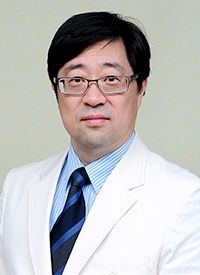Article
Anbalcabtagene Autoleucel Shows Promise in Relapsed/Refractory LBCL
Author(s):
Won Seog Kim, MD, PhD, discusses the potential clinical role of Anbalcabtagene autoleucel in relapsed/refractory diffuse large B-cell lymphoma and the continued evolution of CAR T-cell therapy.
Won Seog Kim, MD, PhD

Anbalcabtagene autoleucel (anbal-cel) exhibited encouraging efficacy in patients with relapsed or refractory diffuse large B-cell lymphoma (DLBCL), according to findings from a phase 1 trial (NCT04836507) presented at the 2022 European Hematology Association Congress (EHA).
Anbal-cel is a novel autologous CD19 CAR T-cell agent that has been knocked down for PD-1 and TIGIT. In preclinical studies, it was suggested that the elimination of CD19-positive cells in vitro and in vivoachieved better results with anbal-cel compared with conventional CD19 CAR T cells.
Eleven patients were assigned to received one of 3 dose levels: 2 × 105 cells/kg (dose level 1), 7 × 105 cells/kg (dose level 2), or 2 × 106 cells/kg (dose level 3). The overall response rate (ORR) in the total population (n=11) was 82%, all of which were complete responses (CRs). Notably, patients treated at dose level 3 (n=4) all achieved CRs.
“In recent years, we are looking at the very impressive outcome of the CAR T-cell therapy in relapsed or refractory large B-cell lymphomas, but we are not curing every patient,” Won Seog Kim, MD, PhD, said. “Still 40% to 50% of the patients treated with CAR T cells are getting some relapse or disease progression.”
In an interview with OncologyLive®, Kim, a professor in the Division of Hematology-Oncology at Samsung Medical Center in Seoul, South Korea, discussed the potential clinical role of anbal-cel in relapsed/refractory DLBCL and the continued evolution of CAR T-cell therapy.
What differentiates anbal-cel from other CAR T-cell agents?
A major reason for CAR T-cell failure is CD19 loss. The other is ingestion of the infused CAR T cell, mainly caused by immune checkpoint protein overexpression, [such as] PD-1.
In anbal-cel cells, we are putting in 2 small hairpin RNA structures into the construct to reduce the expression of TIGIT and PD-1. We are expecting [to]sustain the efficacy of CAR T cells with this strategy.
What was notable concerning the findings of the trial?
The primary end point was safety. The secondary end points were ORR, the CR rate, and duration of response. In the safety aspect, we confirmed it is quite safe. Grade 3 or 4 toxicities were quite uncommon. We had very manageable cytokine release syndrome and neurotoxicity is quite rare compared with other [agents].
The efficacy was quite impressive; there was an 82% CR rate, and all patients experienced tumor shrinkage. It is a quite promising CAR T-cell [therapy].
What are the next steps for this research?
An issue in the CAR T-cell setup is that [that] it is too expensive. To overcome that, the allogenic CAR T-cell [agents] and allogenic natural killer cells are actively developing. Maybe in the future with that kind of approach we can reduce the cost very significantly. I think we can make many different kinds of CAR T cells in the future quite soon and I’m expecting an overcome this very terrible disease.
What would you like your colleagues to take away from this research?
In the CAR T-cell sessions during the EHA [Congress] this year we saw that there are several different ways of approaching the failure of CAR T cells. Our strategy putting in the immune checkpoint level blocking CAR T [cells].
There are many ways to overcome the [common] CAR T-cell failures. In our case, we successfully prevented the exhaustion of CAR T cells through decreased expression of new checkpoint proteins. That is 1 way but there are many other reasons for CAR T-cell failure, like intrinsic T-cell issues or the microenvironment. That will be our next step; how can we overcome these kind of resistance mechanisms?
Reference
Kim WS, Kim SJ, Yoon SE, et al. Phase 1/2 study of anbalcabtagene autoleucel novel anti-CD19 CAR-T therapy with dual silencing of PD-1 and TIGIT in relapsed or refractory large B-cell lymphoma. Presented at: European Hematology Association Congress 2022; June 9-12, 2022; Vienna, Austria. Accessed August 16, 2022. bit.ly/3Qzssqz









